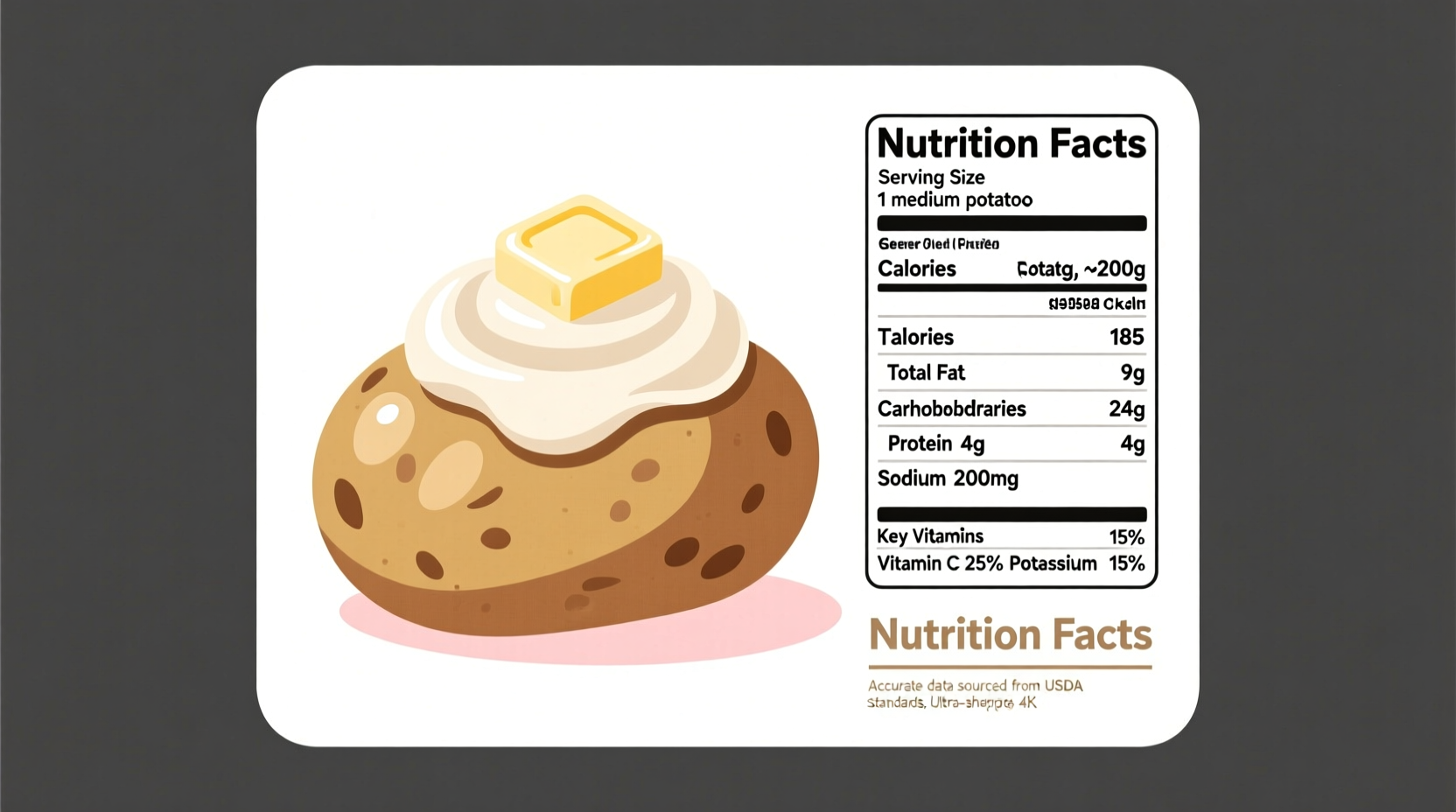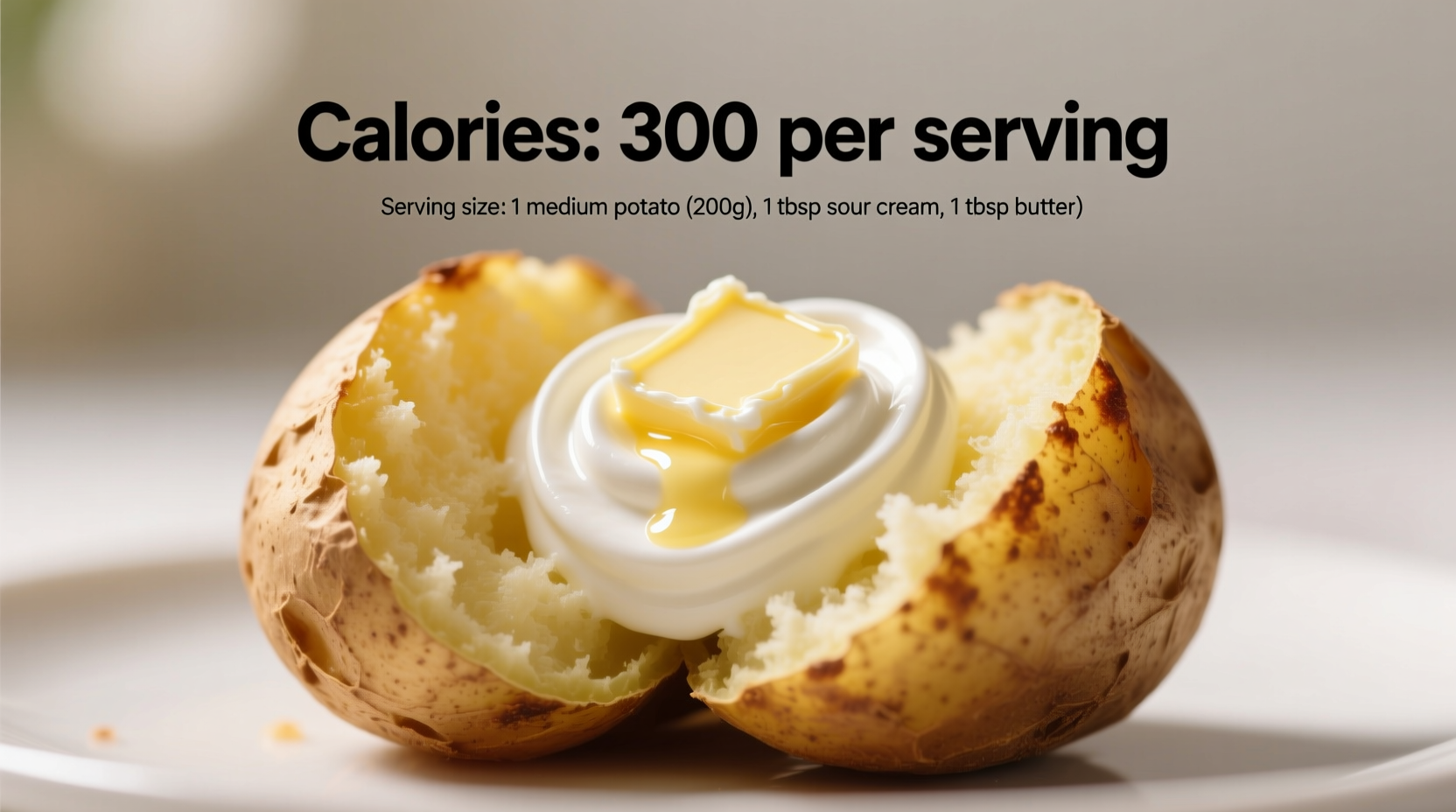Understanding the Calorie Breakdown of Your Favorite Comfort Food
When you're tracking your daily nutrition or planning balanced meals, knowing the exact calorie count of common comfort foods is essential. This guide delivers precise nutritional information for one of America's favorite side dishes - a baked potato with sour cream and butter - based on verified USDA data and dietary research.
What Determines the Calorie Count?
The total calories in your baked potato depend on three key factors: potato size, sour cream quantity, and butter portion. Let's examine each component with verified nutritional data from the USDA FoodData Central database:
| Component | Standard Serving | Calories | Key Nutrients |
|---|---|---|---|
| Baked Potato | Medium (5.3 oz/150g) | 168 | Potassium, Vitamin C, Fiber |
| Sour Cream | 2 tbsp (30g) | 52 | Calcium, Vitamin A |
| Butter | 1 tbsp (14g) | 100 | Vitamin A, Vitamin E |
| Total | Complete Dish | 320 | Balanced Macronutrients |
How Portion Size Changes Your Calorie Intake
Restaurant servings often exceed standard portions, dramatically increasing calorie content. A large baked potato (300g) with generous toppings can reach 500+ calories. Understanding standard measurements helps maintain dietary control while enjoying this classic combination.

Nutritional Context: More Than Just Calories
While tracking calories matters for weight management, this combination offers valuable nutrients beyond its energy content:
- Potato: Provides 26% of your daily potassium needs and 28% of vitamin C
- Sour Cream: Contributes calcium and beneficial fats for nutrient absorption
- Butter: Contains fat-soluble vitamins that enhance nutrient bioavailability
Practical Modifications for Health-Conscious Enjoyment
You don't need to eliminate this comfort food from your diet. Smart adjustments maintain flavor while managing calorie intake:
Simple Swaps That Make a Difference
- Use Greek yogurt instead of sour cream (saves 20 calories per serving)
- Measure butter portions instead of free-pouring (prevents 50+ extra calories)
- Add herbs and spices for flavor without additional calories
- Choose smaller potato varieties (like Yukon Gold) for naturally lower calories
Comparing Common Toppings: Calorie Impact Analysis
Different toppings create significant variations in your baked potato's nutritional profile. According to USDA research, here's how common additions compare:
| Topping Combination | Calories (per medium potato) | Protein Content |
|---|---|---|
| Sour cream + butter | 320 | 6g |
| Cheese + bacon | 410 | 18g |
| Chives + olive oil | 210 | 4g |
| Broccoli + cheese sauce | 380 | 14g |
When This Classic Combination Fits Your Dietary Goals
This dish works well in various eating patterns when properly portioned. Athletes benefit from the carbohydrate-protein-fat balance for recovery, while those managing weight can enjoy it as an occasional treat within their calorie budget. The key is understanding appropriate portions for your specific nutritional needs.
Expert Tips for Maximizing Nutritional Value
Professional chefs and nutritionists recommend these evidence-based strategies:
- Eat the skin for double the fiber content (USDA research shows 2g vs 1g without skin)
- Cool potatoes slightly before adding toppings to preserve resistant starch
- Combine with lean protein sources to create a complete meal
- Use grass-fed butter for higher omega-3 content when possible
Common Questions About Baked Potato Nutrition
Based on frequent inquiries from nutrition counseling sessions, here are answers to the most common questions about this classic dish:











 浙公网安备
33010002000092号
浙公网安备
33010002000092号 浙B2-20120091-4
浙B2-20120091-4